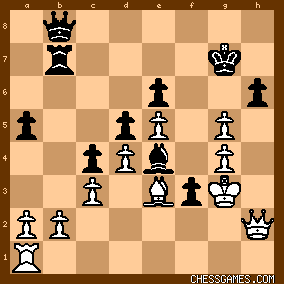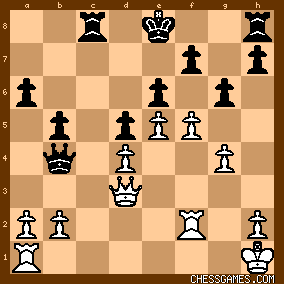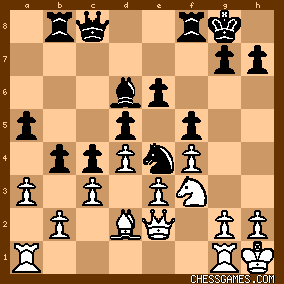|
Venue
The match took place in the Bohemian spa resort of Carlsbad (at the time part of the Austro-Hungarian Empire, but now in the Czech Republic and known as Karlovy Vary). "Along with Vienna and Prague, over the past few years Carlsbad has developed to be an equally important Austrian chess centre. It has through its vigorous chess club and its tireless director of the match, Herrn. Senior Tax Inspector Tietz, become a magnet towards which chess master events are powerfully attracted." (1) Viktor Tietz saw that he could combine simultaneously the promotion of chess and of Carlsbad as an European resort for the well-healed. The Albin-Marco match of 1901 (from July 31 to August 12, 1901) took place in the Kurhaus (2) spa hotel during in the middle of the social season at Carlsbad (3). For Viktor Tietz, this was the first of his increasingly ambitious chess projects at Carlsbad. In 1902, the chess club and the city council financed a more ambitious match between David Janowski and Carl Schlechter ; and in 1907 they instigated their first international tournament - Karlsbad (1907). The tournament attracted top players which generated significant publicity, and it established the spa as a host for very strong grandmaster events: Karlsbad (1911), Karlsbad (1923), and Karlsbad (1929). Finance
The cost of the match was underwritten by the town council and the Carlsbad Chess Club. The players received an appearance fee of 50 Krowns, with a further 30 Krowns for a win and 15 Krowns each for a draw. "Pražské Šachové" criticised the purse of 400 Krowns as being "not very much." (4) 50 Krowns would be approximately £206 in 2015 value (5) Albin: 2 wins and 4 draws = 50 + (2x30) + (4x15) = 170 Krowns (£700 in 2015 value) Marco: 4 wins and 4 draws = 50 + (4x30) + (4x15) = 230 Krowns
(£950 in 2015 value)
The players
Adolf Albin "Albin, Adolf...was born at Bucharest, Roumania. He was educated at Vienna for a mercantile career, and filled an engagement with the German railway king, Dr. Stroussberg (6), till his downfall. Herr Albin, how ever, kept up his end of the see-saw for a few years by returning to Vienna. He now represents New York. The goddess of chess did not make his acquaintance till he was a well-grown man, but so great was his aptitude that, never too old to learn, he quickly came to the front and, after winning several first prizes in Vienna tournaments, he entered the Masters' Tournament at Dresden in 1892, and surprised the world by giving Siegbert Tarrasch his only defeat in a very fine game (Albin vs Tarrasch, 1892 ). His style of play is ingenious and picturesque, with a pleasing dash of rashness, perhaps deficient in book knowledge but showing a keen appreciation of the leading principles of the game. His other chief successes are : 1893, second prize at New York; following Emanuel Lasker a drawn match with Albert Hodges of New York; and a win versus Eugene Delmar." (7) Albin was fifteen years' older than his opponent. His peak period was in the mid 1890's and his best performance was in Game Collection: New York 1893, The Impromtu Tournament (8) Returning to Europe, after two years as a chess professional the United States, to play in Hastings (1895), he finally settled in Vienna. Although he was not to win any major tournament, on his day he was a dangerous opponent. Georg Marco "Marco, Georg, from Vienna, a man of considerable stature and fine muscular appearance, so much so that he has been jokingly termed 'the strongest chess-player of the world.' He won the first prize finely in the last Amsterdam National Tournament without losing a game, and coming out ahead of Max Weiss, Carl Schlechter, Berthold Englisch, etc. His general appearance is very German, with but little of the bandbox about him (9). One of the chief favourites with the visitors, and apparently on good terms with the masters also, he was largely the life of the Tourney, always bubbling over with fun, and cracking jokes with any and all who could understand his language...His style of game also might be called playful, delighting in comical and puzzling positions of a problematic type." (10) Marco was a strong player peaking at ninth in the world in 1900 (11). His best results were in the early years of the twentieth century until the First World War. Marco was an influential man in the chess world. He had originally gone to Vienna to study medicine, but had become seriously ill with pneumonia and pleurisy and had to abandon his studies. Instead built a career in Vienna combining chess administration, playing and journalism. In 1893, Marco became secretary of the Vienna Chess Association (Wiener Schachgesellschaft) (12) and he was editor of the "Wiener Schachzeitung" from 1898 to 1916 (13) Before this match they had played seven times with Marco having the advantage (+3,=2,-2). Edo Chess' analysis indicates that http://www.edochess.ca/matches/m117...
at the time of the match and for several years before, Marco was the higher rated player. In the Vienna Chess Club Winter Tournament over the New Year, they had shared third and fourth prizes behind Schlechter and Semyon Alapin. Albin was not able thereafter to sustain his position in the rankings, probably due to advancing age. Progress of the match Marco had white in the odd-numbered games.
Round 1 2 3 4 5 6 7 8 9 10 Total
Albin ½ 1 ½ ½ 0 1 0 0 ½ 0 4
Marco ½ 0 ½ ½ 1 0 1 1 ½ 1 6
<Progressive scores:>Albin twice was in the lead and after Game 7 the score was level. Marco then won with Black in Games 8 and 10. Round 1 2 3 4 5 6 7 8 9 10
Albin ½ 1½ 2 2½ 2½ 3½ 3½ 3½ 4 4
Marco ½ ½ 1 1½ 2½ 2½ 3½ 4½ 5 6
<The Games>Game 1
In the first game, Marco had white and played a Ruy Lopez. Albin used a defence with which Harry Pillsbury had achieved a terrific attack - Showalter vs Pillsbury, 1898 but Marco played carefully and a draw should have ensued. Marco misplayed a King and pawn endgame, but with victory in sight Albin stumbled: 
click for larger viewlosing a tempo with <44..Kf6?> Instead, <44...c4!> wins after 45. g5 d4 46. cxd4+ Ke6 (not 46... Kxd4? 47. g6 c3 48. g7 c2 49. g8=Q c1=Q =) 47. Kh5 c3 48. g6 c2 49. g7 Kf7 50. Kh6 c1=Q+ Game 2
Albin, with his first white of the match, played a Stonewall with obvious intentions of a King-side attack in the manner of Pillsbury (Pillsbury vs D G Baird, 1893). Marco was too strong and experienced to succumb to such a rustic opening and gradually took over the initiative. He was happy to repeat his play three year's later - Showalter vs G Marco, 1904. In a good position he threw his good work away: 
click for larger viewwith <34...Rxb2?>; most probably believing he would be giving mate to the White King. Game 3
Marco again used the Ruy Lopez and Albin defended with an uncommon continuation similar to Bird's Defence. Albin had all but equalized when he gave Marco an unwarranted opportunity by allowing him to position his rook on the sixth rank 
click for larger viewwith <29.Rxa6>. Instead Marco exchanged Rooks and the game was eventually drawn. Game 4
Albin changed to a K-pawn opening with a Giuoco Piano. The players followed the famous Steinitz vs von Bardeleben, 1895 to move 10. Neither player made a conspicuous error, and the game progressed to a drawn Rook and pawn ending. Game 5
Game Five marks the start of a turbulent period in the match with four successive decisive games. Albin chose to change his defence introducing the French Defence into this match. Albin lost with a careless move 
click for larger view22...Rc4? handed the initiative to Marco and as Albin's king was stranded and vulnerable in the centre of the board. Marco had now managed to catch his opponent up in the match. Game 6
Albin again chose to open with <1.e4> but Marco varied defending a Ruy Lopez. Albin established a dangerous passed pawn at <c7> and Marco had to give up material. Once again Albin was ahead in the match. Game 7
Despite his setback in game Five, Albin again chose the French defence, but he varied by exchanging central pawns early in a manner and then posting a Knight on <f6>. Albin had seen Delmar play in this manner - S R Rocamora vs E Delmar, 1894. In a minor piece ending, mutual blunders led the advantage veer one way and then the other before Albin made the last mistake. Georg Marco had a decided view about luck in chess: ‘...any unbiased chess friend will have come to the conclusion that in a game of chess chance rules almost as often as in a game of roulette. Nor is there anything surprising in that; the probability that in a given critical position a chess master will select the best move...(but) is easy to show that the values of these powers diminish very rapidly, and the probability of always finding the correct move diminishes in a very alarming way. Now consider physical weakness; exhaustion after a protracted struggle; tendency to light-heartedness when the position is favourable; tendency to dejection when the position is critical, and it will be clear that absolute correctness is an ideal at which everybody aims, but which nobody attains, or ever will attain.'(14) Game 8
No longer a point ahead, Albin played the solid Giuoco Piano, which was part of his usual repertoire. In the early middle game, he played passively and Marco had some initiative on the White squares preventing Albin from castling. Albin could not untangle himself and lost a pawn. He was then unable to prevent Marco queening his <a> pawn. Marco was now ahead for the first time in the match. Game 9
Marco with White played a Ruy Lopez. He attempted to attack on the King-side by allowing the opening the <g> file in front of his castled King. Albin played calmly and was able to exchange material to create a drawn minor piece ending. Albin remained a point behind but with White in the final game. Game 10
Albin played a non-theoretical opening <Nf3, e3 followed by Ne5 and f4>. and a reversed Dutch-Stonewall pawn structure developed. As in Game 2, Marco had little problem with this line. He created vigorous Queen-side counterplay before Albin could establish any attack on the opposite wing. 
click for larger viewHaving to win to tie the match, Albin attempted to engineer a King-side attack, but Marco had no weakness there. Instead, Marco was now able to penetrate Albin's position on his weak white squares. Marco attacked, he won a key pawn on the Queenside and was able to create a unstoppable passed pawn. Albin later refined his opening play to defeat Marco the next year - Albin vs G Marco, 1902 Notes
1 "Wiener Schachzeitung", No.7-8, July-August, 1902, p.163-164. 2 http://www.tietz.cz/tietz/index.php... 3The social season at Carlsbad,"begins on April 1st and lasts till November..", "North Devon Gazette", Tuesday 12th February 1901. See Wikipedia article: Season (society) 4 http://www.tietz.cz/tietz/index.php... 5 1 Pound sterling = 23.97 Kr.
(Wikipedia article: Austro-Hungarian krone) and for relative values see https://www.measuringworth.com/ukco... 6Wikipedia article: Bethel Henry Strousberg 7 "The Hastings Chess Tournament 1895", edited By Horace F. Cheshire. Chatto & Windus, 1896, p.359. 8 http://chessmetrics.com/cm/CM2/Play... 9 The phrase alludes to being smartly dressed, e.g. being as smart as something fresh out of the box. 10 "The Hastings Chess Tournament 1895", edited By Horace F. Cheshire. Chatto & Windus, 1896, p.359-60. 11 http://www.chessmetrics.com/cm/CM2/... 12 "Wiener Schachzeitung", January-February 1915", p.2-3,5 and 9. 13 Wikipedia article: Georg Marco
14 Georg Marco quoted in the "British Chess Magazine", December 1907, p.558. The original collation of the games of this match was completed by User: Pawn and Two.
| 


